A Novel Metasurface-Based Monopulse Antenna with Improved Sum and Difference Beams Radiation Performance
Abstract
1. Introduction
2. General Structure of Metasurface-Based Monopulse Antenna
3. Cell Design
4. Design of Monopulse Feed and Comparator
5. Metasurface-Based Main-Reflector and Simulation Results
6. The Fabrication and Measurement Results
7. Conclusions
Author Contributions
Funding
Institutional Review Board Statement
Informed Consent Statement
Data Availability Statement
Conflicts of Interest
References
- Skolnik, M. Radar Handbook; McGraw-Hill Education: New York, NY, USA, 1970. [Google Scholar]
- Qian, S.S.; Li, X.G.; Wang, B.Q. Ka band Cassegrain monopulse antenna fed by tapered rod antennas. In Proceedings of the 2008 8th International Symposium on Antennas, Propagation and EM Theory, Kunming, China, 2–5 November 2008; pp. 39–41. [Google Scholar]
- Zheng, P.; Zhao, G.Q.; Xu, S.H.; Yang, F.; Sun, H.J. Design of a W-band full-polarization monopulse Cassegrain antenna. IEEE Antennas Wirel. Propag. Lett. 2016, 16, 99–103. [Google Scholar] [CrossRef]
- Kou, P.F.; Cheng, Y.J. A dual circular-polarized extremely thin monopulse feeder at W-Band for prime focus reflector antenna. IEEE Antennas Wirel. Propag. Lett. 2019, 18, 231–235. [Google Scholar] [CrossRef]
- Cao, F.; Yang, D.; Pan, J.; Geng, D.; Xiao, H. A compact single-layer substrate-integrated waveguide (SIW) monopulse slot antenna array. IEEE Antennas Wirel. Propag. Lett. 2017, 16, 2755–2758. [Google Scholar] [CrossRef]
- Li, W.; Liu, S.; Deng, J.; Hu, Z.; Zhou, Z. A compact SIW monopulse antenna array based on microstrip feed. IEEE Antennas Wirel. Propag. Lett. 2021, 20, 93–97. [Google Scholar] [CrossRef]
- Zhu, J.; Liao, S.; Li, S.; Xue, Q. 60 GHz substrate-integrated waveguide-based monopulse slot antenna arrays. IEEE Trans. Antennas Propag. 2018, 66, 4860–4865. [Google Scholar] [CrossRef]
- Cheng, Y.J.; Hong, W.; Wu, K. 94 GHz substrate integrated monopulse antenna array. IEEE Trans. Antennas Propag. 2012, 60, 121–129. [Google Scholar] [CrossRef]
- Chu, H.; Chen, J.X.; Luo, S.; Guo, Y.X. A millimeter-wave filtering monopulse antenna array based on substrate integrated waveguide technology. IEEE Trans. Antennas Propag. 2016, 1, 316–321. [Google Scholar] [CrossRef]
- Yang, T.; Zhao, Z.; Yang, D.; Liu, X.; Liu, Q.H. A single-layer SIW slots array monopulse antenna excited by a dual-mode resonator. IEEE Access 2019, 7, 131282–131288. [Google Scholar] [CrossRef]
- Gharibi, H.; Hodjatkashani, F. Design of a compact high-efficiency circularly polarized monopulse cavity-backed substrate integrated waveguide antenna. IEEE Trans. Antennas Propag. 2015, 63, 4250–4256. [Google Scholar] [CrossRef]
- Cheng, Y.J.; Hong, W.; Wu, K. Design of a monopulse antenna using a dual V-type linearly tapered slot antenna (DVLTSA). IEEE Trans. Antennas Propag. 2008, 56, 2903–2909. [Google Scholar] [CrossRef]
- Peng, H.L.; Yin, W.Y.; Mao, J.F.; Xie, Y.T. A compact single/dual-polarized broadband antenna with SUM and difference beam capabilities. IEEE Antennas Wirel. Propag. Lett. 2010, 9, 990–993. [Google Scholar] [CrossRef]
- Yu, Z.W.; Wang, G.M.; Zhang, C.X. A broadband planar monopulse antenna array of C-band. IEEE Antennas Wirel. Propag. Lett. 2009, 8, 1325–1328. [Google Scholar]
- Wang, H.; Fang, D.G.; Chen, X. A compact single layer monopulse microstrip antenna array. IEEE Trans. Antennas Propag. 2006, 54, 503–509. [Google Scholar] [CrossRef]
- Vosoogh, A.; Haddadi, A.; Zaman, A.U.; Yang, J.; Zirath, H.; Kishk, A.A. W-band low-profile monopulse slot array antenna based on gap waveguide corporate-feed network. IEEE Trans. Antennas Propag. 2018, 66, 6997–7009. [Google Scholar] [CrossRef]
- Tamayo-Domínguez, A.; Fernández-González, J.M.; Sierra-Castañer, M. Monopulse radial line slot array antenna fed by a 3-D-printed cavity-ended modified butler matrix based on gap waveguide at 94 GHz. IEEE Trans. Antennas Propag. 2021, 69, 4558–4568. [Google Scholar] [CrossRef]
- Subbarao, B.; Fusco, V.F. Probe-fed circularly polarised monopulse radial line slot antenna. Electron. Lett. 2003, 39, 1495–1496. [Google Scholar] [CrossRef]
- Pan, X.; Yang, F.; Xu, S.; Li, M. A 10 240-element reconfigurable reflectarray with fast steerable monopulse patterns. IEEE Trans. Antennas Propag. 2021, 69, 173–181. [Google Scholar] [CrossRef]
- Faenzi, M.; González-Ovejero, D.; Petraglia, G.; D’Alterio, G.; Pascariello, F.; Vitiello, R.; Maci, S. A metasurface radar monopulse antenna. IEEE Trans. Antennas Propag. 2021, 70, 2571–2579. [Google Scholar] [CrossRef]
- Wang, J.; Li, D.; Shang, S.; Song, D.; Luo, X.; Li, X. Design of a folded reconfigurable reflectarray antenna for mono-pulse radar application. In Proceedings of the 2018 12th International Symposium on Antennas, Propagation and EM Theory (ISAPE), Hangzhou, China, 3–6 December 2018; pp. 1–4. [Google Scholar]
- Hu, W.; Ismail, M.; Cahill, R.; Encinar, J.; Fusco, V.; Gamble, H.; Linton, D.; Dickie, R.; Grant, N.; Rea, S. Liquid-crystal-based reflectarray antenna with electronically switchable monopulse patterns. Electron. Lett. 2007, 43, 1–2. [Google Scholar] [CrossRef]
- Di Palma, L.; Clemente, A.; Dussopt, L.; Sauleau, R.; Potier, P.; Pouliguen, P. Radiation pattern synthesis for monopulse radar applications with a reconfigurable transmitarray antenna. IEEE Trans. Antennas Propag. 2016, 64, 4148–4154. [Google Scholar] [CrossRef]
- Wan, X.; Xiao, Q.; Zhang, Y.Z.; Li, Y.; Eisenbeis, J.; Wang, J.W.; Huang, Z.A.; Liu, H.X.; Zwick, T.; Cui, T.J. Reconfigurable sum and difference beams based on a binary programmable metasurface. IEEE Antennas Wirel. Propag. Lett. 2021, 20, 381–385. [Google Scholar] [CrossRef]
- Kou, N.; Yu, S.; Ding, Z.; Zhang, Z. Monopulse transmitarray antenna fed by aperture-coupled microstrip structure. Front. Inf. Technol. Electron. Eng. 2022, 23, 502–510. [Google Scholar] [CrossRef]
- Zhao, J.; Li, H.; Yang, X.; Mao, W.; Hu, B.; Li, T.; Wang, H.; Zhou, Y.; Liu, Q. A compact Ka-Band monopulse Cassegrain antenna based on reflectarray elements. IEEE Antennas Wirel. Propag. Lett. 2018, 17, 193–196. [Google Scholar] [CrossRef]
- Lanteri, J.; Dauvignac, J.Y.; Pichot, C.; Migliaccio, C. Beam-scanning improvement of reflectarrays by reducing the cell size at millimetre waves. Microw. Opt. Technol. Lett. 2006, 48, 966–968. [Google Scholar] [CrossRef]
- Almajali, E. Reflectarray antennas: Operating mechanisms, and remedies for problem aspects. Ph.D. Thesis, Carleton Institute for Electrical and Computing Engineering, Ottawa, ON, USA, 2014. [Google Scholar]
- Yu, N.; Genevet, P.; Kats, M.A.; Aieta, F.; Tetienne, J.P.; Capasso, F.; Gaburro, Z. Light propagation with phase discontinuities: Generalized laws of reflection and refraction. Science 2011, 334, 333–337. [Google Scholar] [CrossRef]
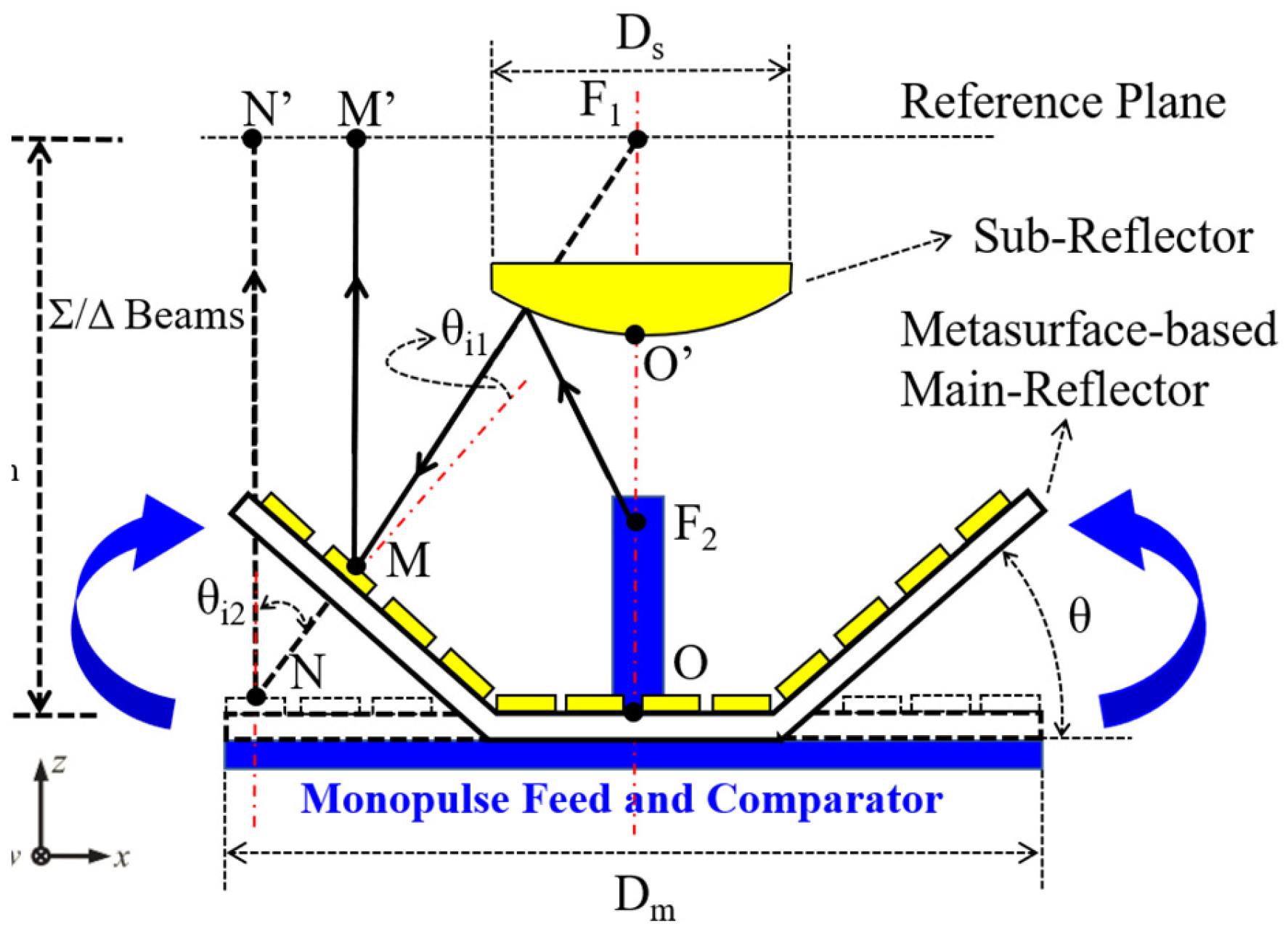
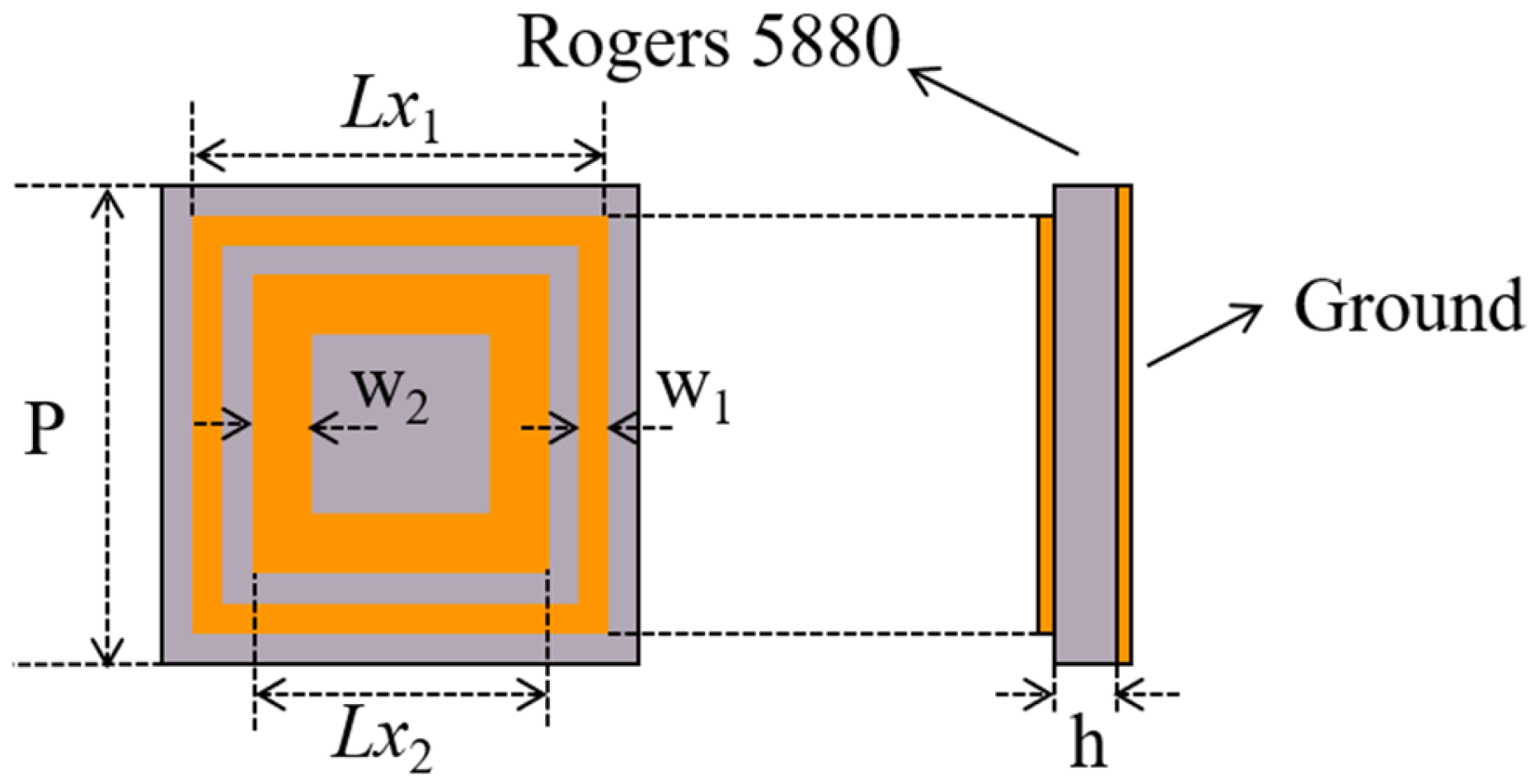
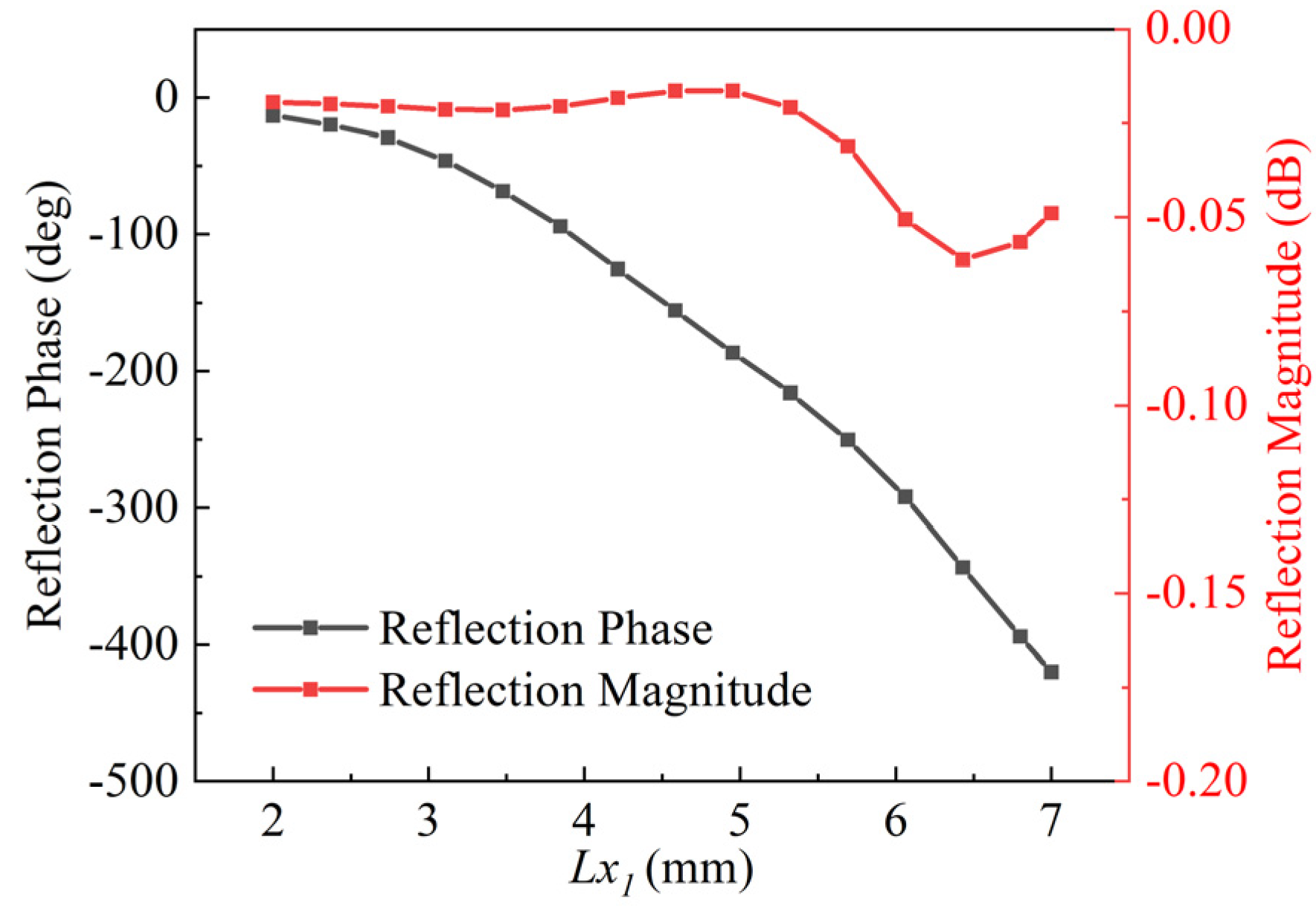

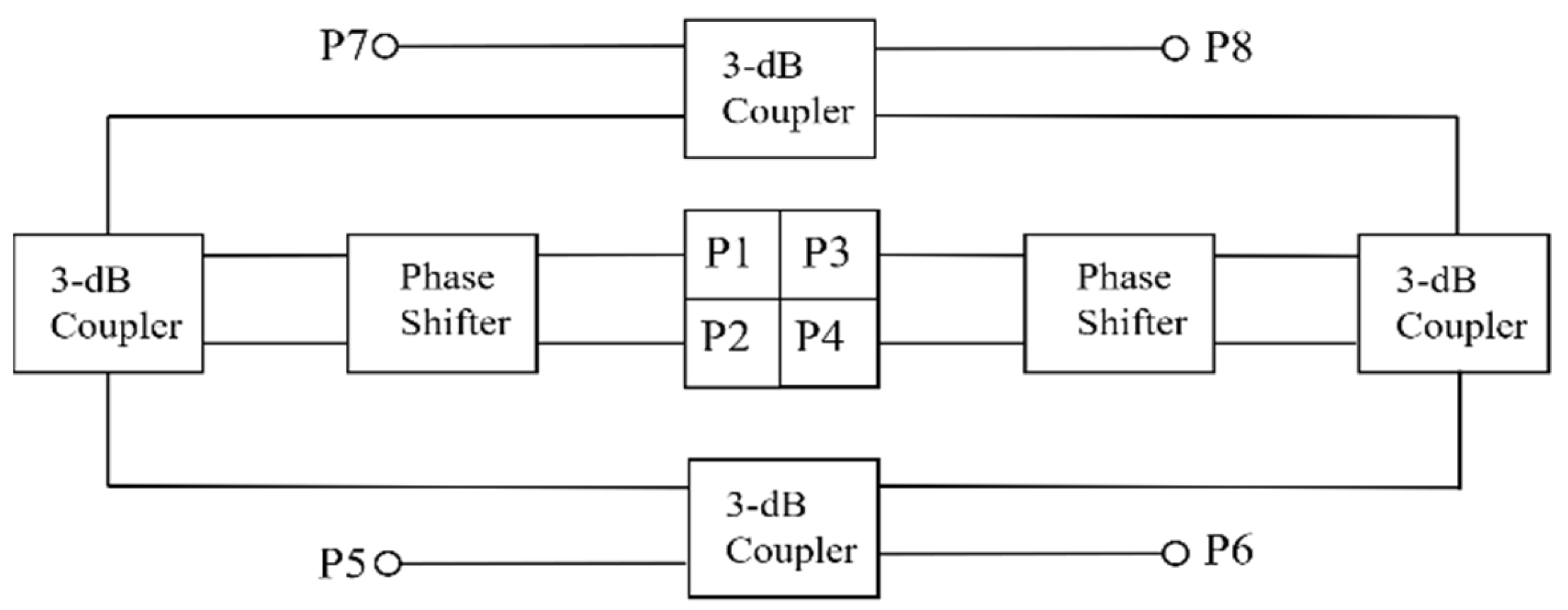
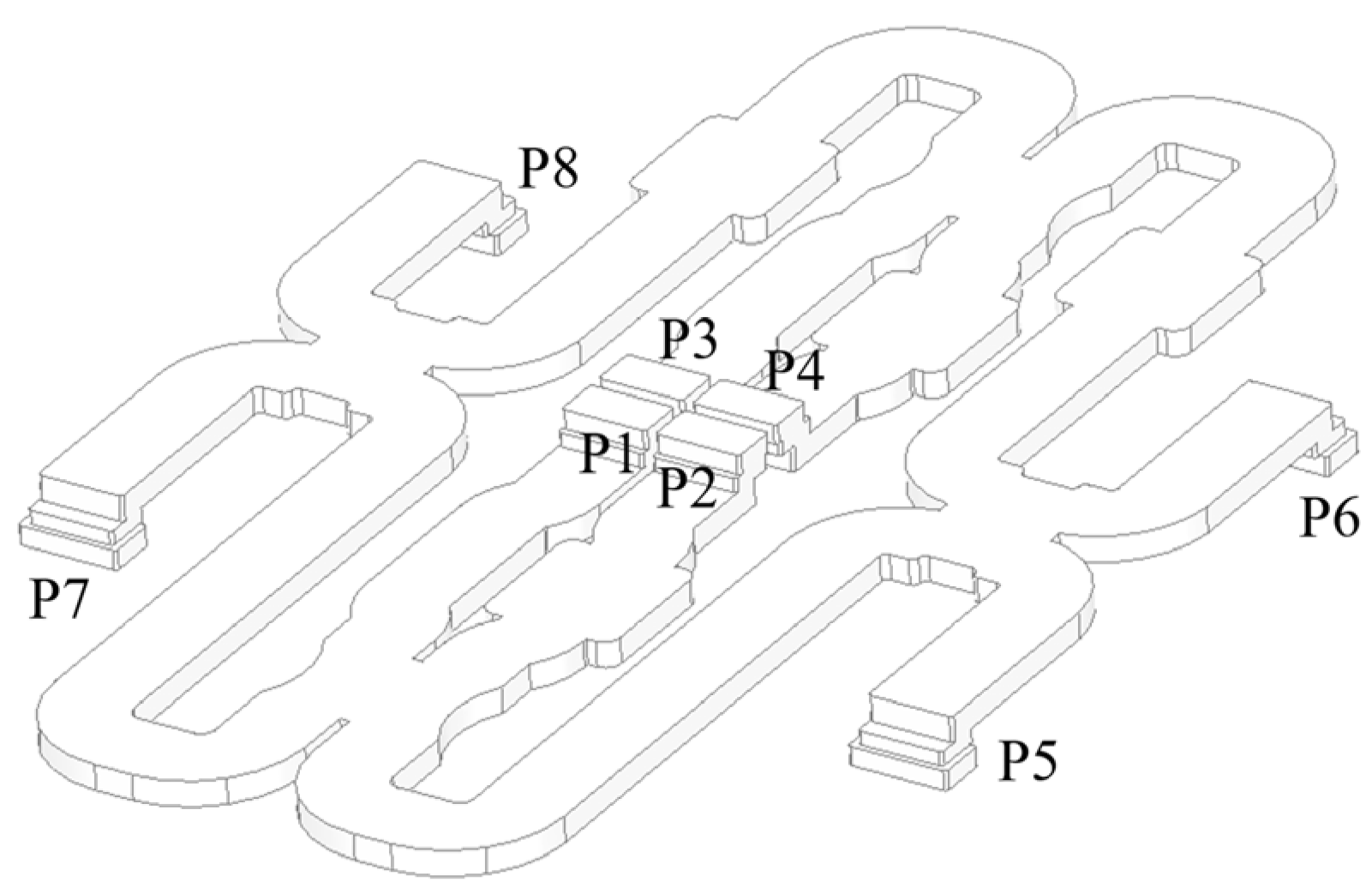


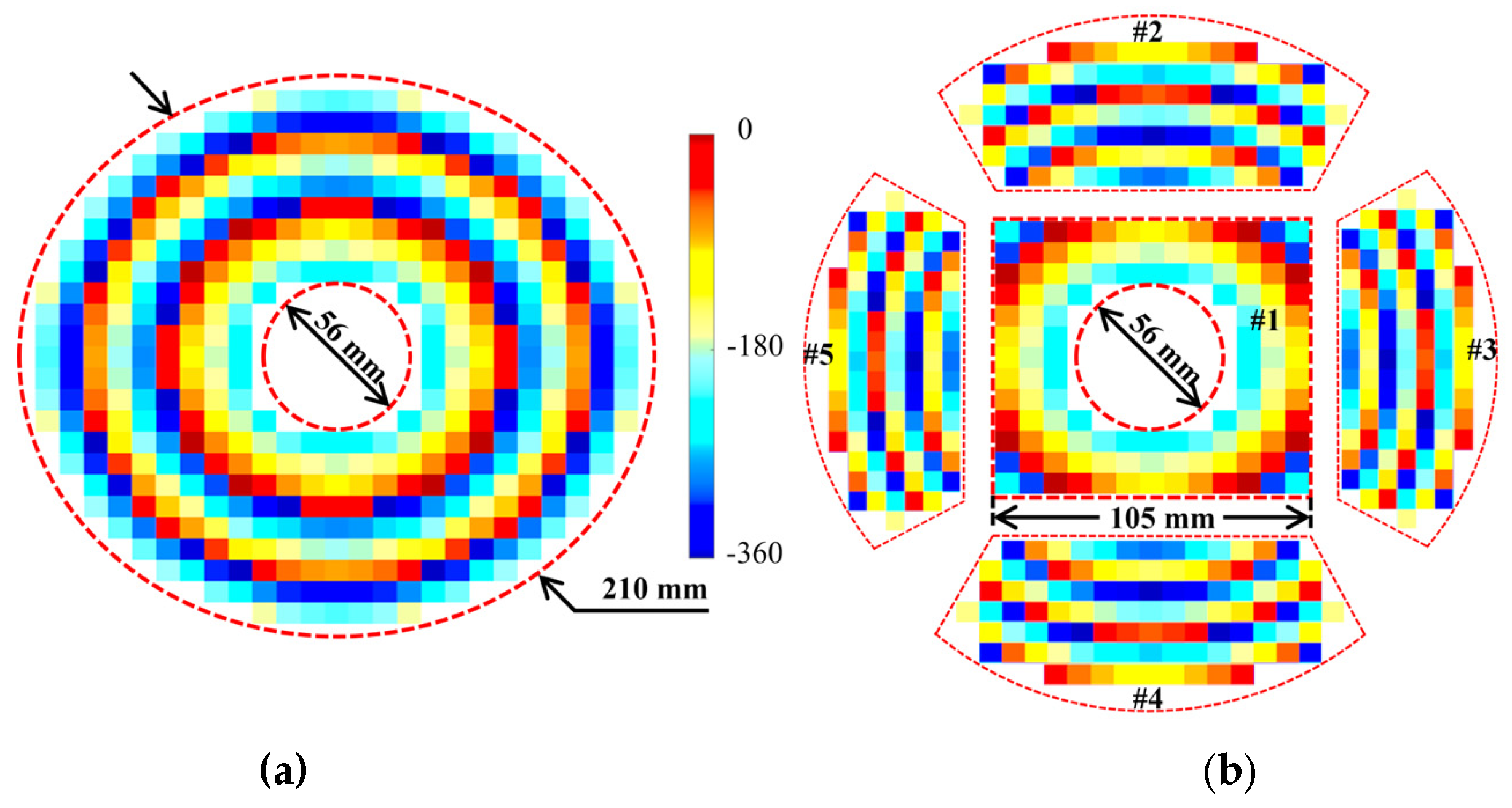
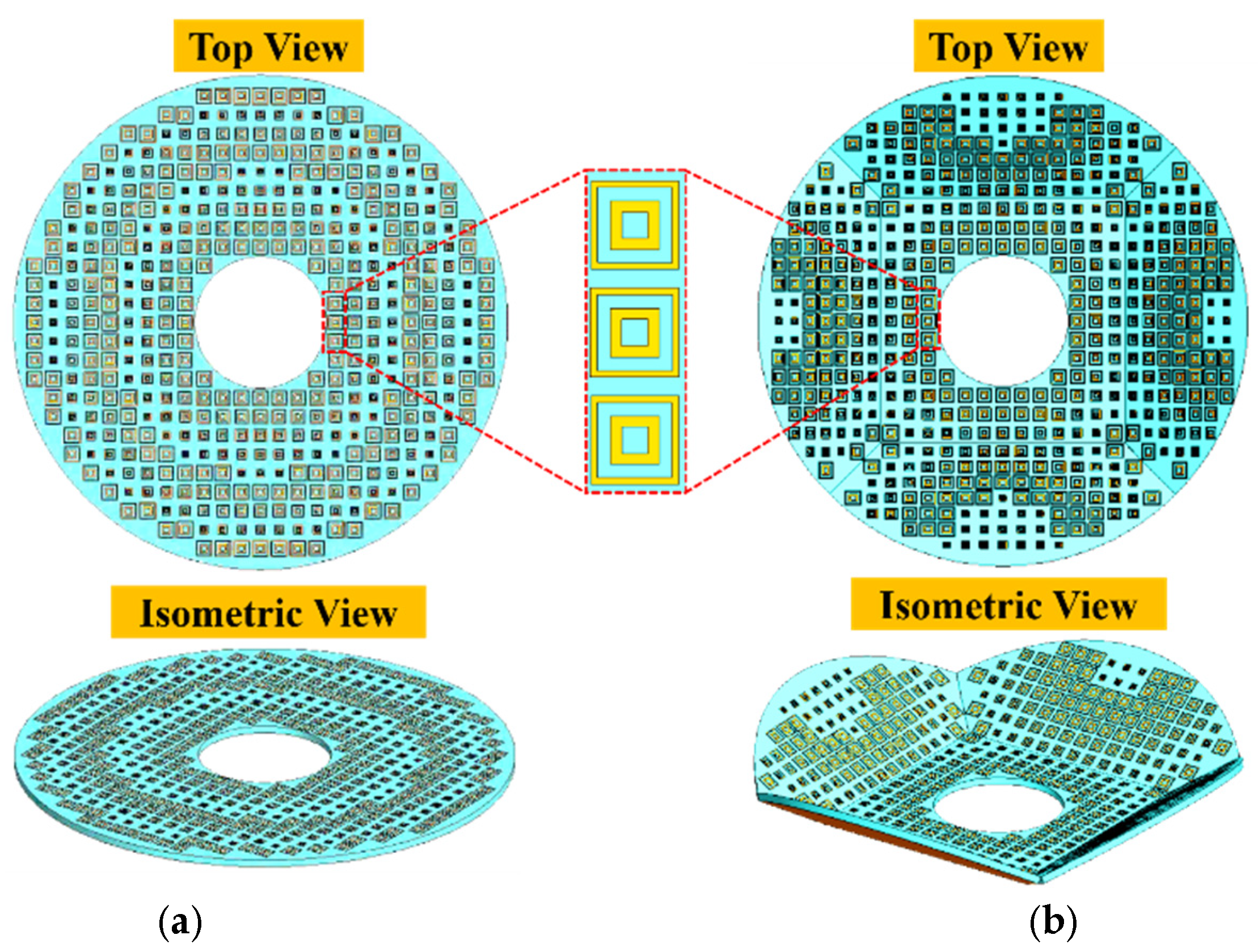
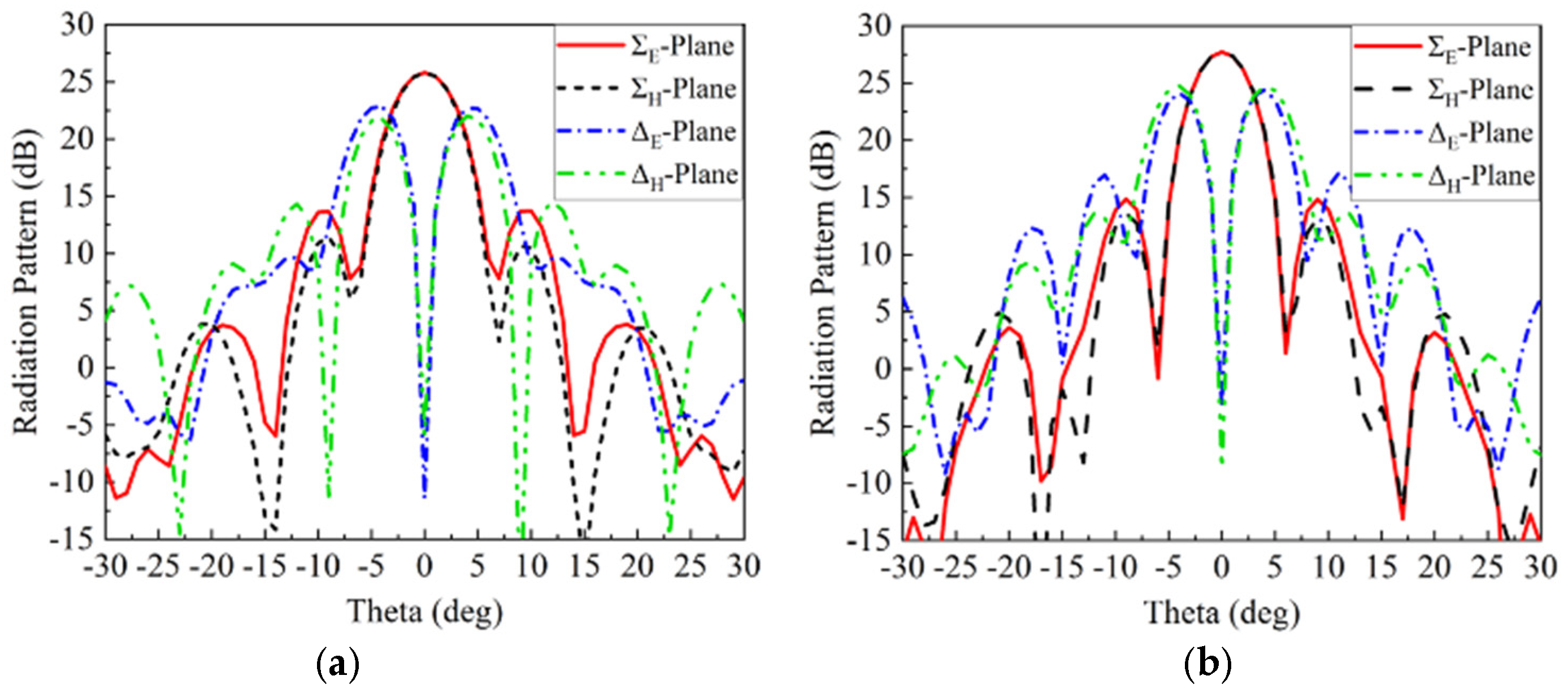

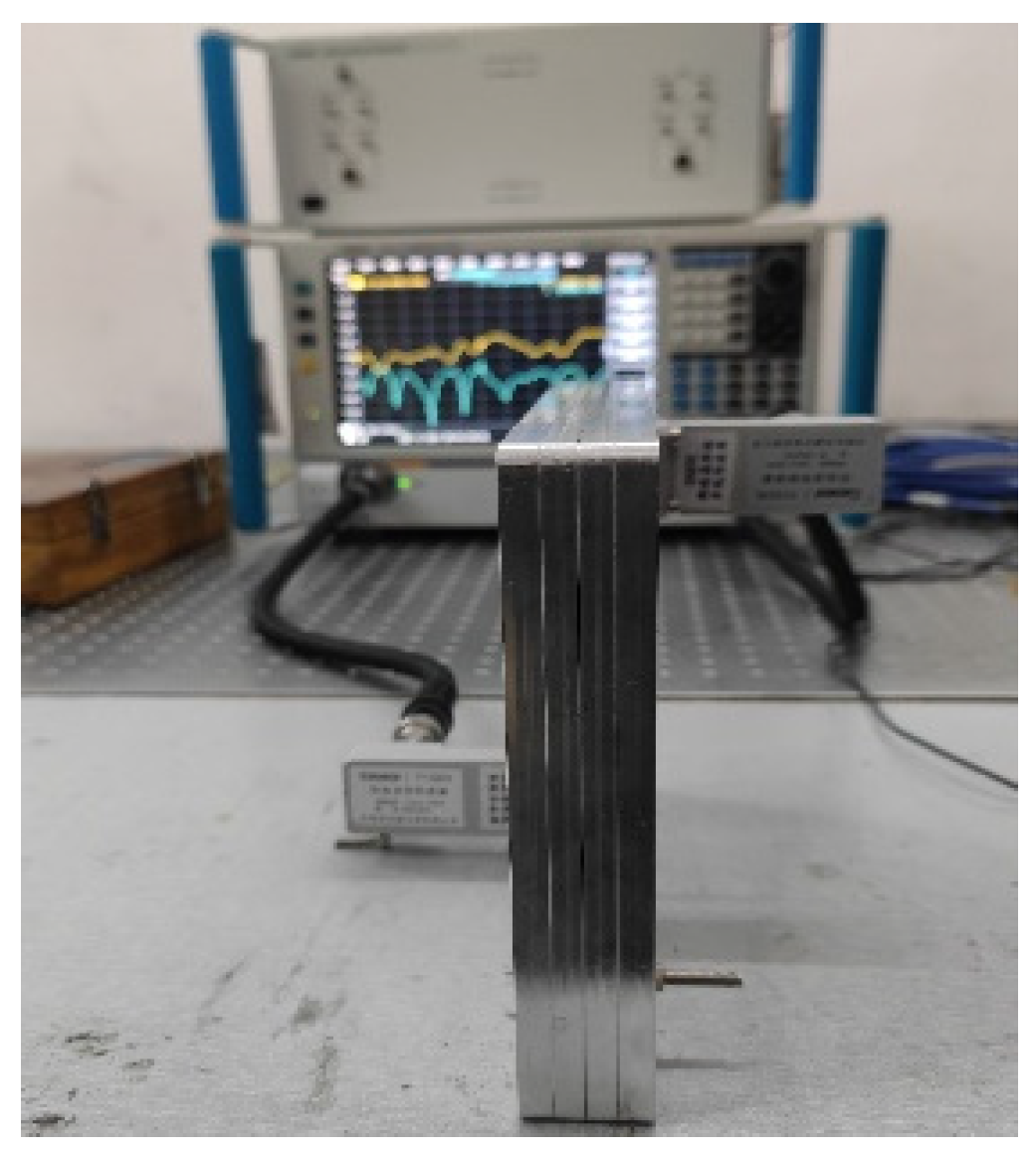
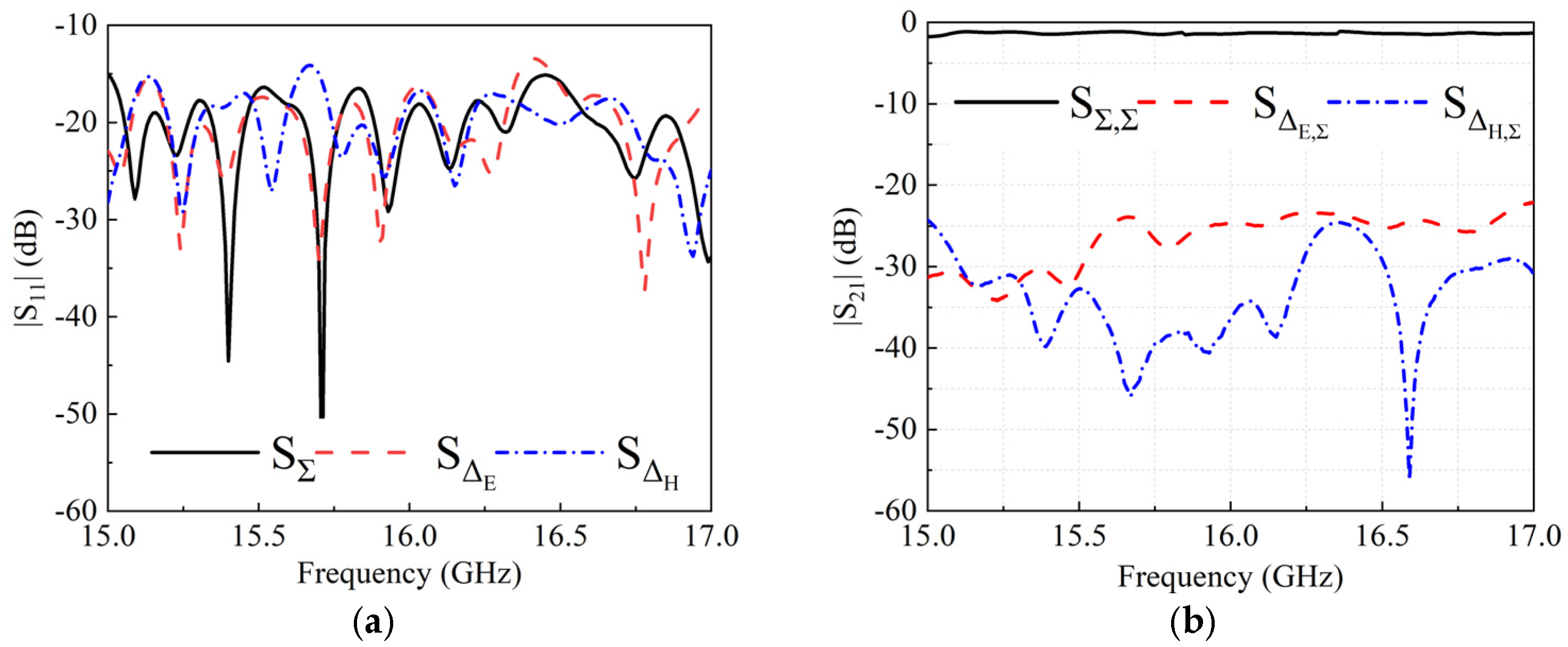
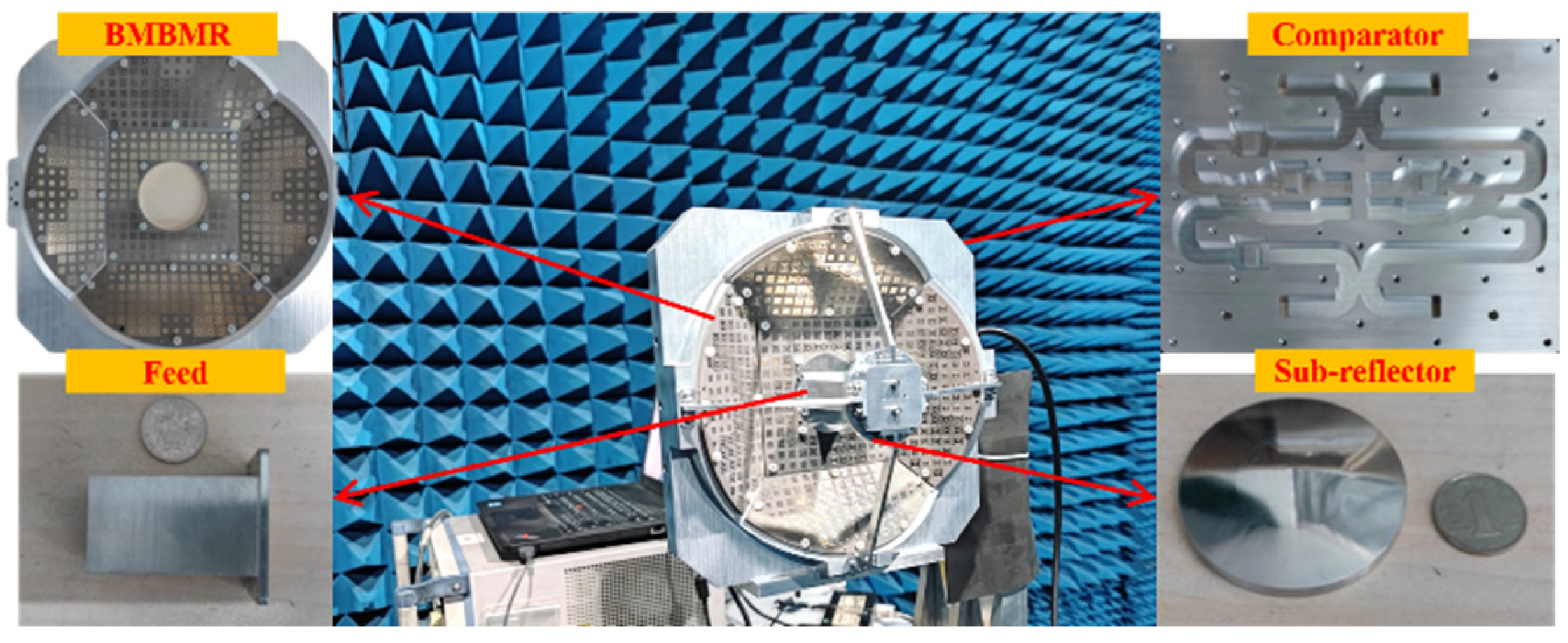
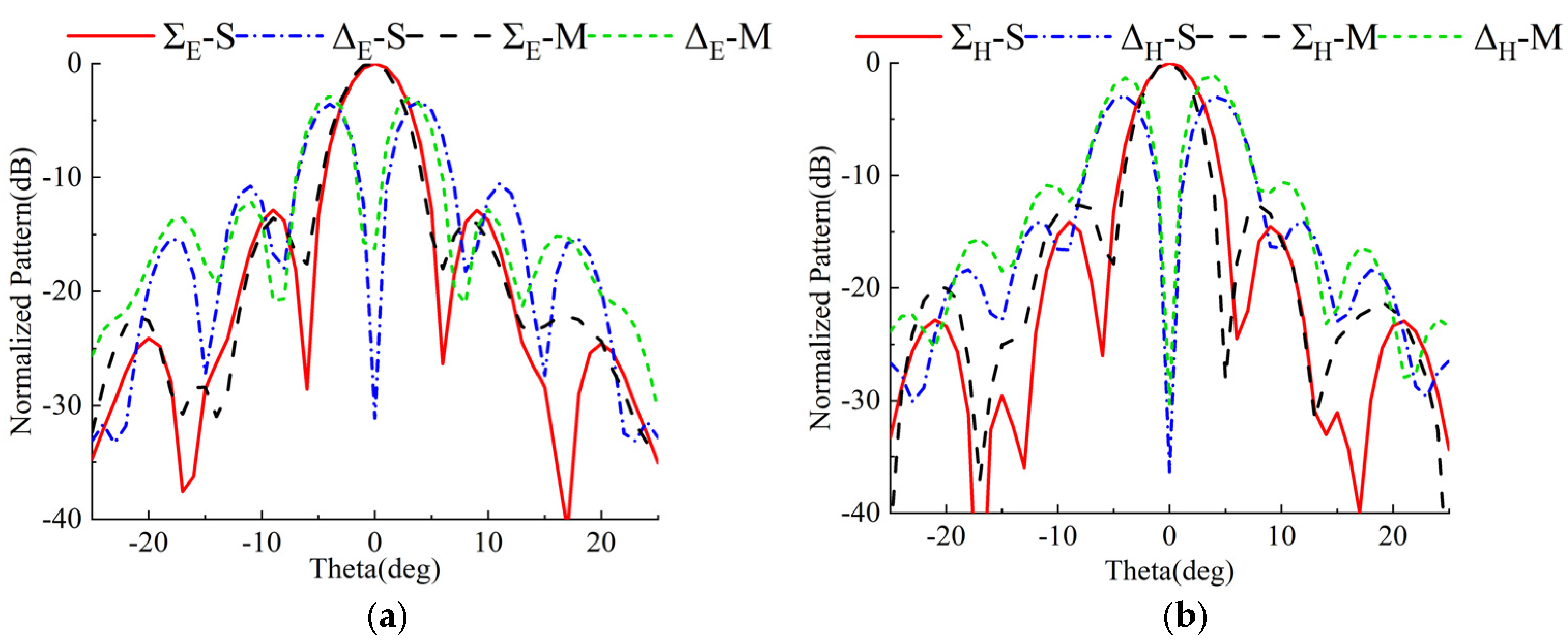
| P | k | h | w1 | w2 |
|---|---|---|---|---|
| 8 mm | 0.65 | 3.175 mm | 0.5 mm | 1 mm |
| Ref. | Freq (GHz) | Maximum Gain of Σ Pattern (dBi) | Aperture Size | Measured Aperture Efficiency | Gain Ratio Σ/Δ Patterns (dB) |
|---|---|---|---|---|---|
| [4] | 35 | 35.6 | 140 mm, circular | 19.1% | 3.5 |
| [5] | 5.83 | 12.9 | 109 mm × 174 mm | 21% | >3 |
| [25] | 10 | 21.5 | 200 mm × 200 mm | 32.2% | 4.7/7.56 |
| [26] | 35 | 29.4 | 170 mm, circular | 22.43% | 3/5 |
| This work | 16 | 27.1 | 210 mm, circular | 41.4% | 2.8/3.7 |
Publisher’s Note: MDPI stays neutral with regard to jurisdictional claims in published maps and institutional affiliations. |
© 2022 by the authors. Licensee MDPI, Basel, Switzerland. This article is an open access article distributed under the terms and conditions of the Creative Commons Attribution (CC BY) license (https://creativecommons.org/licenses/by/4.0/).
Share and Cite
Zhao, J.; Hao, L.; Li, H.; Tong, Z.; Li, T.; Wang, H.; Hu, B.; Zhou, Y.; Li, F.; Fu, C.; et al. A Novel Metasurface-Based Monopulse Antenna with Improved Sum and Difference Beams Radiation Performance. Micromachines 2022, 13, 1927. https://doi.org/10.3390/mi13111927
Zhao J, Hao L, Li H, Tong Z, Li T, Wang H, Hu B, Zhou Y, Li F, Fu C, et al. A Novel Metasurface-Based Monopulse Antenna with Improved Sum and Difference Beams Radiation Performance. Micromachines. 2022; 13(11):1927. https://doi.org/10.3390/mi13111927
Chicago/Turabian StyleZhao, Jianing, Li Hao, Hao Li, Zihao Tong, Tianming Li, Haiyang Wang, Biao Hu, Yihong Zhou, Fang Li, Cheng Fu, and et al. 2022. "A Novel Metasurface-Based Monopulse Antenna with Improved Sum and Difference Beams Radiation Performance" Micromachines 13, no. 11: 1927. https://doi.org/10.3390/mi13111927
APA StyleZhao, J., Hao, L., Li, H., Tong, Z., Li, T., Wang, H., Hu, B., Zhou, Y., Li, F., Fu, C., & Li, Q. (2022). A Novel Metasurface-Based Monopulse Antenna with Improved Sum and Difference Beams Radiation Performance. Micromachines, 13(11), 1927. https://doi.org/10.3390/mi13111927





